Marigolds belong to the family Asteraceae, according to Academia.edu. They are easy to grow.
These flowers are often used for borders and companion plants in the garden. They may have tiny petite-sized flowers the size of a quarter. However, the blooms of other marigolds can be as big as a saucer.
Marigolds range in color from deep orange, or red, to bright yellow. Some marigold blooms sport a brown fringe on the edge of the flower petal. In comparison, other blooms are a single vibrant color.
Marigold plants are easy to take care of and grow. But none like icy weather; they will die once the first frost settles on your gardens.
Are marigolds perennials?
Table of Contents
Are Marigolds Perennials or Annuals?
Marigolds are considered annuals. When planted in a moderate climate, they can self-seed and behave like perennials. Only three of the 50 species of marigold dominate the commercial market. If you want marigold varieties outside of these three species, you will need to grow them from seed yourself.

The Most Common Varieties of Marigolds
The African, French, and Signet varieties are the three most common marigold varieties. Their blooms are golden yellow, butter yellow, and orange.

Some varieties have a darker fringe along the edges of the petals.
Marigolds are native to South and North America, and African marigolds are annual. The Tagetes erecta, and Mountain Marigold are perennials.
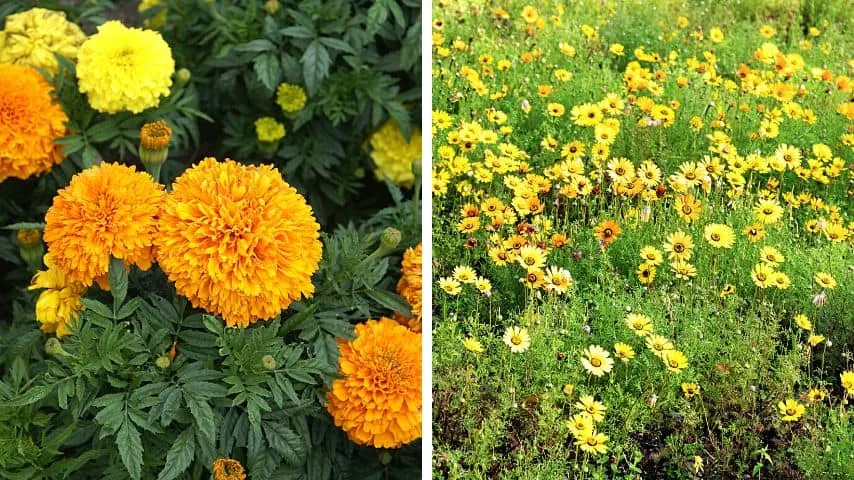
However, like other marigolds, they too reseed, so they are likely annuals whose behavior is misunderstood.
Are Marigolds Perennials in Florida
If you grow marigolds outside of southern Florida, they may grow all year long as if they were perennials. Many plants will grow year-round in warm latitudes.
However, if you get frost, snow, and ice where you live, your potted marigolds will need to come inside. Also, any marigolds you have outside will die once they are hit by frost. They can take cool days and nights, but frost or ice will kill them.
If you want a marigold plant to live into the winter months, place it in a warm sunny place and keep it watered and fertilized as you usually would.
When Do Marigolds Bloom
The marigold plant will bloom from late spring until fall when it is planted in an ideal spot. In warmer climates, they can grow through the winter months.
Marigolds will grow year-round in a sunny south-facing window or greenhouse. They will not be as lively but will grow right on.
When the last frost is gone, you can move them outdoors where it is sunny. Or, you can plant them in your garden, and you will have blooms earlier than if you plant seed.
Where to Plant Marigolds
Marigolds can be seeded outdoors once there’s no threat of frost. They can also be planted indoors and planted in pots or gardens.

Hardy plants and marigolds can be directly seeded in your garden and can be left there until hit with frost. At that time, you can gather any remaining flowers and save the seed from them for next year.
Marigolds are great companion plants in vegetable gardens and can be grown beside your tomatoes and other garden veggies to ward off insects.
Whether you plant your marigolds in pots or in the garden, they love the sun. Therefore, they need to be planted where they get a plentiful amount of sun.
They’ll grow spindly and not give you as many blooms if you grow they receive too much shade.

Pinch your Marigold Blooms to Promote Growth
Dead blooms take energy from a plant and need to be removed. You will accomplish two things daily if you take the time to remove droopy flowers.
First, you will have a bloom to dry for seed, and secondly, your plant will be encouraged to grow more flowers.
How to Gather Seeds from my Marigolds
Remove the flower head from the plant with a sharp knife of scissors.
Place the seed pods on a tray, waxed paper, or a plate and let them dry in the open air for about a week.
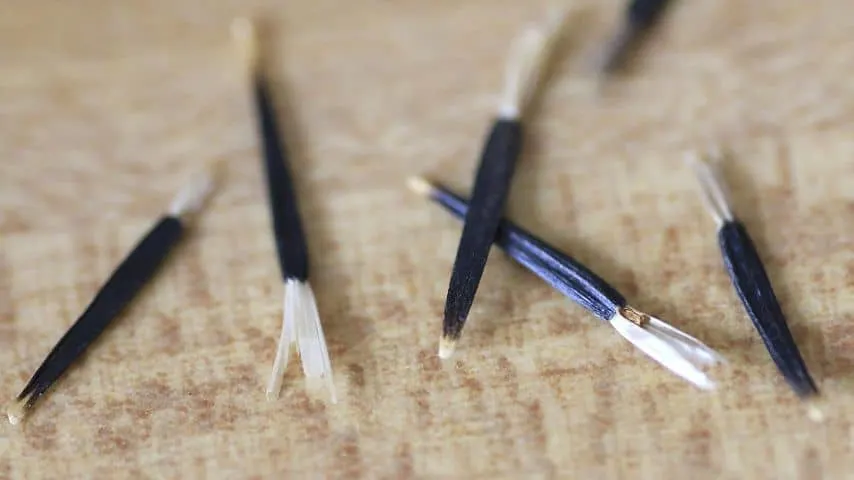
Once the seeds are dry, remove any pods or husks left clinging to the seeds. Adequately dried marigold seeds will snap like a matchstick. If yours are not that brittle when you store them, they may mold during storage, which can ruin your seed.
Grow Marigolds — Perennial Marigold Care
Soil
Marigolds grow best in well-draining loamy soil, according to Clemson University. A peat-based medium works as well.
The ideal is a 5.8 -6.5 pH.
Light
Full sun is ideal. Marigolds are native to South America, Mexico, and Central America.

Water
Water when the soil’s top inch is dry (2.5cm). You can use your index finger to check the soil’s moisture level.

Temperature
The ideal temperature range is between 60-65°F (15.6-18.3°C), according to Auburn University.
Location
They grow best in dry, sunny conditions.
Planting
When planting Marigolds into the soil, make sure to use mulch. Mulch ensures that weeds are not growing and competing for nutrients.
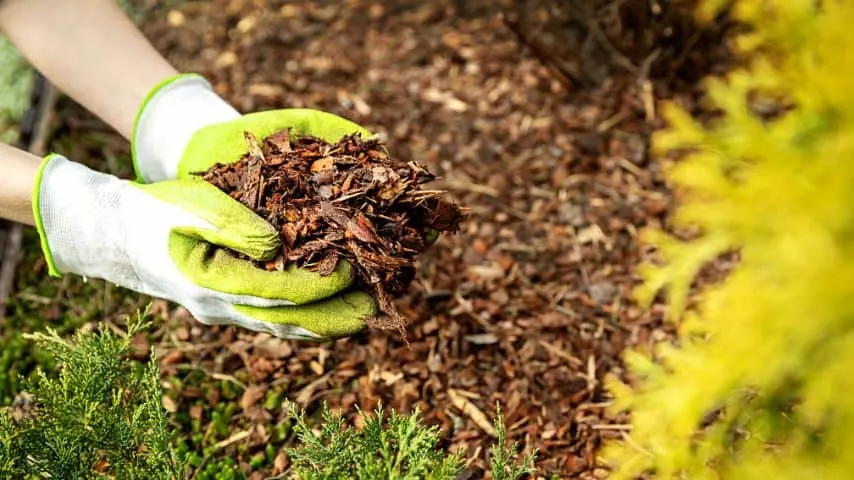
Fertilizer
Fertilize using an NPK ratio of 20-10-20 or 15-0-15 once a week. This will ensure dark green foliage and healthy blossoms.
Pruning
Deadheading can be used to increase blooming. Gardeners use this method to get marigolds to flower again.
Propagation
These plants can either germinate from seeds and be planted directly or be sown inside. Alternatively, you can grow them from cuttings.
Pests
Marigolds are great for keeping pests away.
The University of Florida states that marigolds are great for keeping plant-parasitic-nematodes away.
Types of Marigolds
French Marigold (Tagetes patula)
These bushy plants from Mexico produce orange, red, and yellow flowers. They are annuals. These plants bloom all summer long, according to NC State Extension.
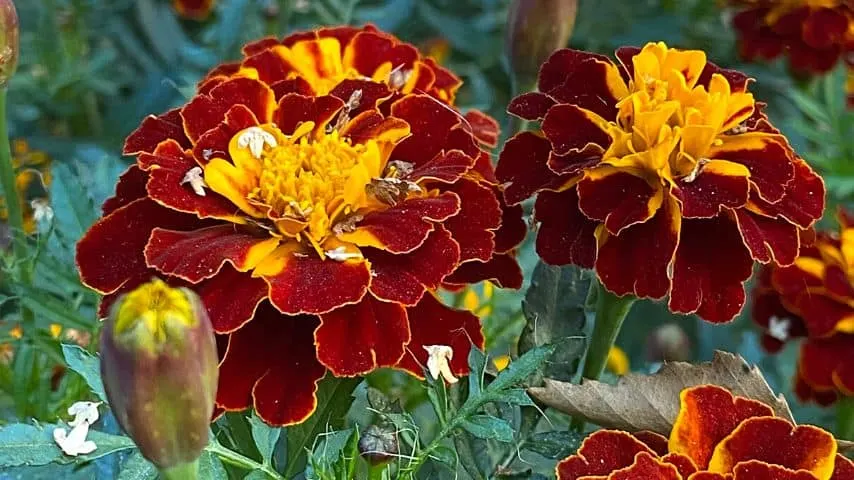
Mexican Marigold (Tagetes lemmoni)
Mexican marigolds are perennials that grow up to 6 ft tall. They produce yellow blooms and aromatic leaves if you believe UC Master Gardeners.
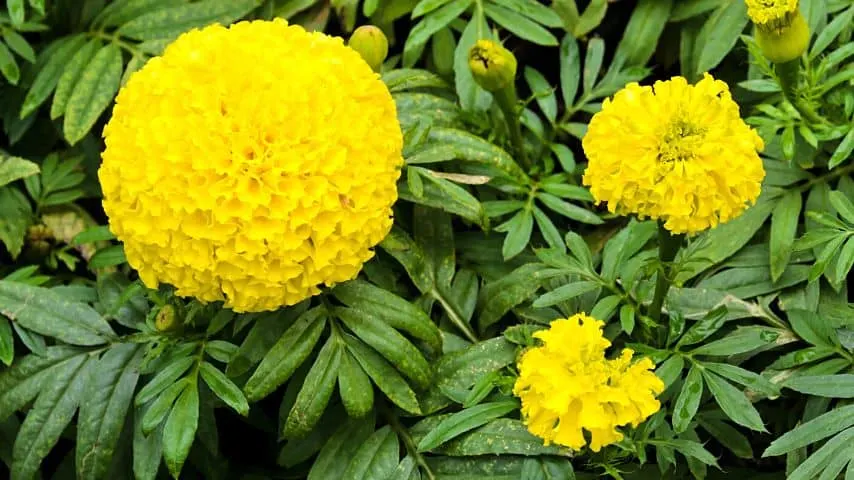
Signet Marigolds (Tagetes tenuifolia, Tagetes signata)
Tagetes marigolds are fast-growing yellow to orange flowers. They are annuals.
The University of Vermont states that its foliage contains oil glands. They produce a distinctive smell when crushed.

How to Save Marigold Seeds
Be sure that the seed is completely dry, then store it in an envelope or Ziploc bag, label it and place the marigold seed in a tightly sealed glass jar.
Place the jar in a cool dark place, and your seed will be there for you when it is time to plant.
If you save your marigold seeds and plant them early, you will have plants ready to go in the ground after the last chance of frost.
So, in late winter, please take a few of your marigold seeds out and start them in a pot of soil in a place that gets six to eight hours of sun a day.
Marigolds can be seeded directly into your garden or planters, too. So, if you collect your seed from your existing marigold plants, you should be able to grow marigolds wherever you want, inside, outside, in pots, planters, and gardens.
Frequently Asked Questions about Marigolds Being Perennials
How long can I keep the marigold seed that I save?
Marigold seeds are found in the seed pod and can be dried and stored for planting next season or the one after that. How you store your seed is important. If your marigold seeds are kept cool and dry, they will keep for a year or two.
How much space does a marigold need to grow?
Depending on the variety, a marigold can grow from six inches to three feet in width and from six inches to four feet in height. When choosing the plant type to grow, consider the space where you’ll grow them before proceeding.

Daniel has been a plant enthusiast for over 20 years. He owns hundreds of houseplants and prepares for the chili growing seasons yearly with great anticipation. His favorite plants are plant species in the Araceae family, such as Monstera, Philodendron, and Anthurium. He also loves gardening and is growing hot peppers, tomatoes, and many more vegetables.


